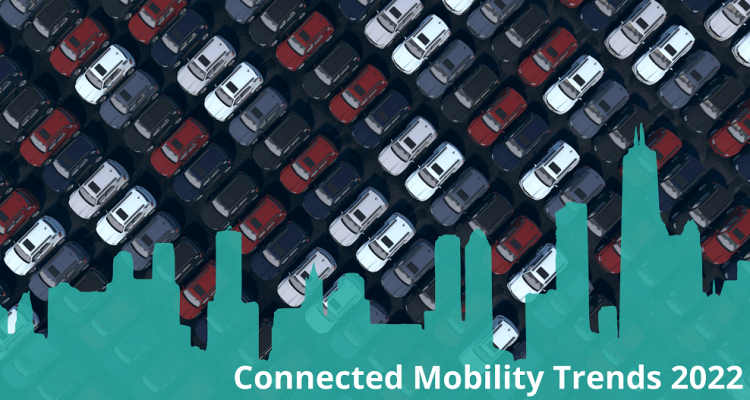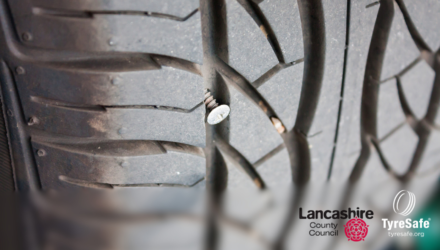When it comes to fleet management, it is safe to anticipate that 2022 will see a generalised need for vehicle replacement, with most looking to divest ageing models they couldn’t get rid of the previous year. Supply chain shortages make things even more complicated, as replacement parts, as well as new cars, are difficult to come by, requiring adaptable innovative solution to manage present challenges as well as future ones. But there is still so much more on the cards for 2022 with the pandemic accelerating innovations in IoT, 5G and urban mobility tools.
Air-Connected Mobility, with its focus on Mobilitech and mobility data analysis, is at the forefront of the digital revolution in the automotive sector and has noted trends expected to dominate the industry in the next year. Let’s have a look at the four major areas of change:
- Data-driven everything
From taking control of one’s own carbon footprint, to traffic management, emissions control and even tailored insurance policies, pricing and vehicle monitoring, mobility data analysis is an important asset for administrators, motorists, and dealers alike.
Black box devices are becoming compulsory on new vehicles all over Europe[1] and recently car manufacturers started including V2X technology in the wide range of car equipment available. V2X, or Vehicle to Everything, is a comprehensive communication system that allows a constant flux of information to and from vehicles and smart cities, aiming to facilitate traffic efficiency, road safety and energy savings. V2X is however still in the bud, and we will reap the benefits of these implementations only in years to come.
Fleet management software and solutions, i.e. GPS, telematics, fuel cards, risk and safety solutions, developmental services and more, have already proven to be indispensable tools for streamlining daily processes and to improve preventive maintenance to extend fleet lifespan. Another application of mobility data analysis is data-driven pricing, based on real-time market insights and a greater standardization, that can help the used car market, together with the introduction of new remarketing channels to increase end-user touchpoints and reach more potential customers.
- Focus on emission control and safety
The European Union is clearly focusing on regulating the mobility sector, in terms of safety as well as emissions control. Safety-wise, starting July 2022 all new vehicles will be required to be equipped with an array of safety features, such as intelligent speed assistance, driver drowsiness and attention warning systems, emergency stop signals, accurate tyre pressure monitoring and event data recorders[2]. To tackle emissions, the EU has set the emission reduction goal for 2030 as 55% of the 2021 value[3]., and internal combustion engine will be banned for new cars from 2035, and only cars with CO2 emissions of 0g/km will be allowed to be registered.
 This attention to environmental issues has spread to the rental sector as well, with Hertz reportedly putting in an order for 100000 Teslas, half of which Uber has committed to renting for its drivers[4]. The popularity of EV has led original equipment manufacturers to expand their vehicle offers, including models for all industries, from construction and utility to long-haul and public transportation[5].
This attention to environmental issues has spread to the rental sector as well, with Hertz reportedly putting in an order for 100000 Teslas, half of which Uber has committed to renting for its drivers[4]. The popularity of EV has led original equipment manufacturers to expand their vehicle offers, including models for all industries, from construction and utility to long-haul and public transportation[5].
- Evolving mobility
The new wave of digitalization and environmental concern has brought on changes in the mobility sector. Major market players are joining forces, creating a lively M&A environment with the goal of becoming the leading 360° mobility player, as evident in the long-term rental segment, with Leasys[6], Donlen[7] and Leaseplan[8] leading the way. We have also seen a tendency to shift away from fossil-fuel powered vehicles, that caused an increase in electric car sales, that went up 80% in 2021[9], a higher interest in more flexible individual mobility solutions and a culture shift towards Mobility as a Service (MaaS). MaaS enables users to plan, book, and pay for multiple types of mobility services through a single channel and heralds the shift away from personal vehicle ownership towards combination services that combine public and private transportation providers.
- Disintermediation
With the increase in online vehicles sales, that went from 2% to 30% in 2020, physical dealerships are feeling the strain[10], and even fleet dealers need to adapt to keep up with times. The tendency to turn to e-commerce or even only to research future purchases has increased during the pandemic, with even the more technology-resistant groups embracing digital innovations.
In the future, we will see leaner retail formats, direct customer access, further outlet consolidation and a proliferation of new sales models, leaning towards leading car makers and OEMs adopting B2B2C business models.
Mobility data, specifically its analysis and implementation, is going to play a key role in the future of the automotive sector. Understanding its importance and implementing Mobilitech solutions can help car manufacturers, consumers and dealers to stay ahead of the new innovations and challenges driven by the fast-paced digital transformation and the new opportunity it’s creating for everyone.
For further information visit: www.myair.io/en/
Author: Paolo Cappello, General Manager at Air-Connected Mobility
[1] Eur-Lex, Regulation 2019/2144
[2] Eur-Lex, Regulation 2019/2144
[3] Electrive, EU to demand stricter CO2 standards for new cars, January 14th 2022
[4] Tech Crunch, Tesla’s deal with Hertz opens new frontier for the EC maker
[5] Fleetio, Adopting Electric Vehicles is Key in Keeping Fleets Relevant
[6] Leasys
[7] Frost & Sullivan
[8] FleetEurope
[9] Utility Dive, Global EV sales rise 80% in 2021 as automakers including Ford, GM commit to zero emissions: BNEF, November 12th 2021
[10] ABC News, More consumers are shopping online for cars. Can dealerships keep up?



















